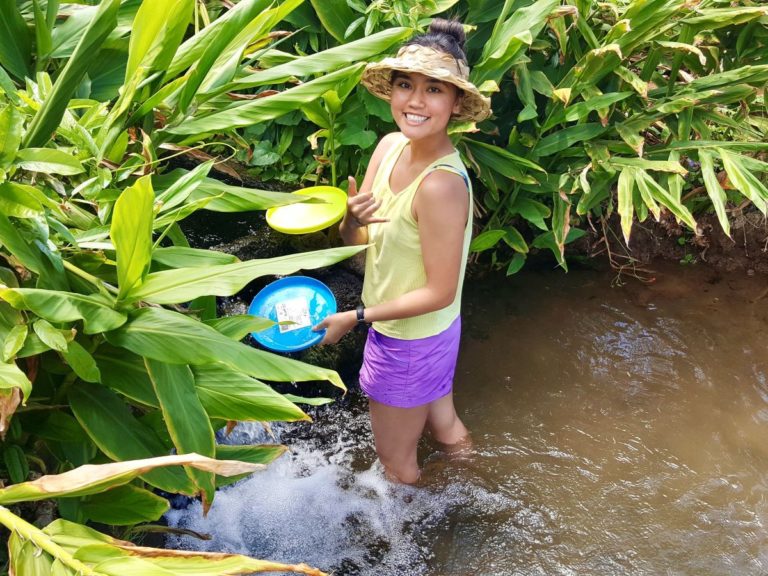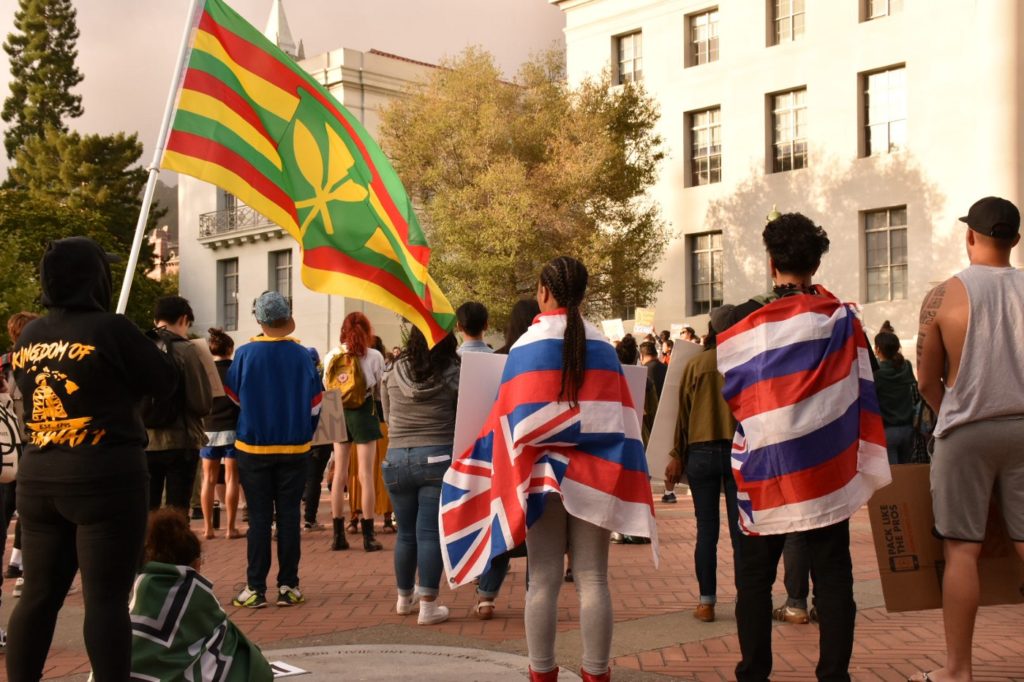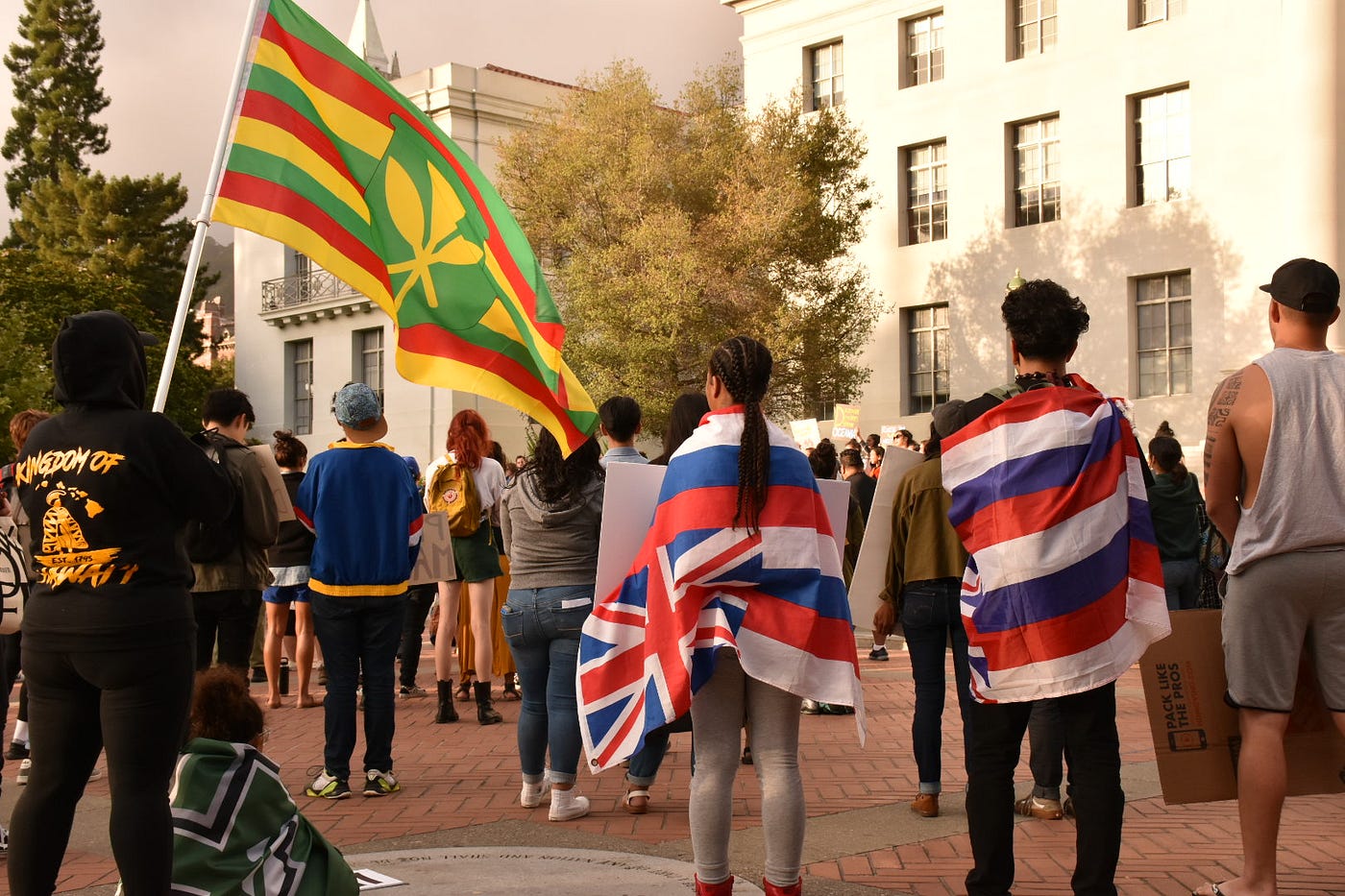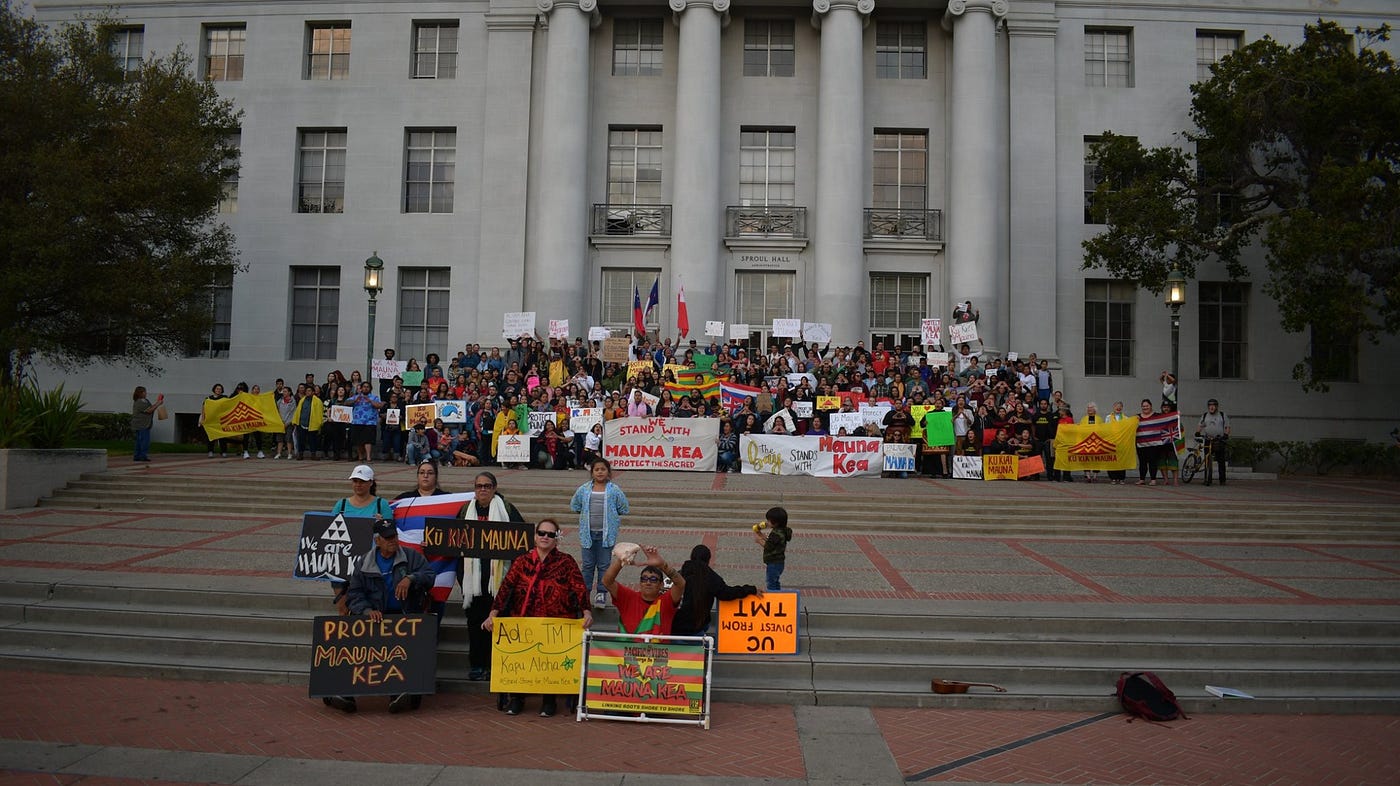

There are no words to express the kaumaha that we at Purple Maiʻa felt upon the arrest of our kūpuna and the state force exercised by the governor last week in declaring a state of emergency. As an organization we wanted to put our manaʻo forth and show our solidarity for the kiaʻi that continue to stand firm at Mauna Kea.
Even in this emotional and difficult situation, we are so inspired by the thousands of kiaʻi on the mountain as well as those who have come out to march, sign-wave, and protest in kapu aloha throughout last week. The unity across ka pae ʻāina o Hawaiʻi has spread to supporters in the U.S. and around the world.


We are especially inspired by those working in STEM fields who have spoken up, such as Aurora Kagawa-Viviani, who asks how we might raise critical thinkers who can “boldly reimagine who and what science and engineering are for,” and Dr. Kiana Frank, who asserts her identity as a Kanaka Scientist while also saying Aʻole TMT because “to ignore the repercussions and exponential downstream environmental, social, political, economic and cultural impacts is SHAMEFUL and IRRESPONSIBLE.”
In this spirit, we are reposting part of a blog we posted in 2015 in response to the protection of Mauna Kea that was happening then:
We see the need for indigenization of science as being of vital import. The ancestral scientists of these pae ʻāina had one moral prerogative embedded within their work: “How do I explicitly ensure that my people will be able to thrive in their ahupuaʻa?” All acts of “science” took place in the context of the complex set of relationships (human and natural) of an island. Deploying this methodology, which drew from both empirical rigor as well as from intuitive spiritual communion, the kupuna of this ʻāina–who revered Mauna-a-Wākea–were able to thrive on the most remote archipelago on the planet. The legacy of these ancestral scientists ranges from loko iʻa and loʻi kalo to the Kumulipo and the ahupuaʻa construct–incredible feats of physical engineering and intellectual systems thinking that were all deployed in the service of sustaining kānaka’s relationship with each other, the ʻāina around them, and the deified ancestors before them. Bringing this sentiment forward will only be of service to our contemporary society, and it is this sentiment that informs Purple Maiʻa’s vision of the future:
First of all, Hawaiians will have jobs in technology without having to sacrifice sacred sites, cultural values, and connection to community in order to get them. Right now the figures on diversity in the tech industry show that while technology may be colorblind, people of color do not have equal access to technology education and high-skilled jobs in technology. For Hawaiians and students from Hawaiʻi, leaving to pursue tech jobs and tech education is all too often a necessity. This means that many people don’t pursue technology as an extension of ancestral practices. That needs to change.
Second, our definition and understanding of what technology is will expand to recognize the value of ancestral practices and their applicability to contemporary problems. Ancestral knowledge is encoded with values and with an empowered orientation toward the world; this is a world in which we, like our ancestors, are makers of our own technological hacks, innovations, and equitable solutions. In the future, we understand that there is no contradiction between science and culture because they are embedded in each other.
Finally, technology will truly serve communities, the land, and their continued connections to each other. Rather than pursuing a project and justifying how it helps everyone and/or apologizing for how it harms others later, technology practitioners will listen and think critically about how their work impacts communities and the land before, during, and after undertaking a project.

We all want to be on the mauna, and we all have to find our way of contributing. Some of us find it in protecting, some in advocacy and policy, some find it in mele/ʻoli/art, some in farming, fishing and full-time mālama ʻāina, and some in education. Many people are doing all of these things and more at the same time, and these movements continues to grow and gain power.
As for us, we remain committed to empowering and raising young Kanaka to see themselves in technology because our keiki deserve all the choices about how they will carry forth their identity and kuleana. They must know that they, like their kūpuna, can be innovators, leaders, and people who stand for aloha ʻāina.
Ways to support kiaʻi:
Aloha ʻĀina Support Fund set up by KAHEA
Mauna Kea Legal Defense Fund / Mauna Kea Education and Defense Fund
Mauna Kea Protection Fund set up by Hoʻopae Pono Peace Project

